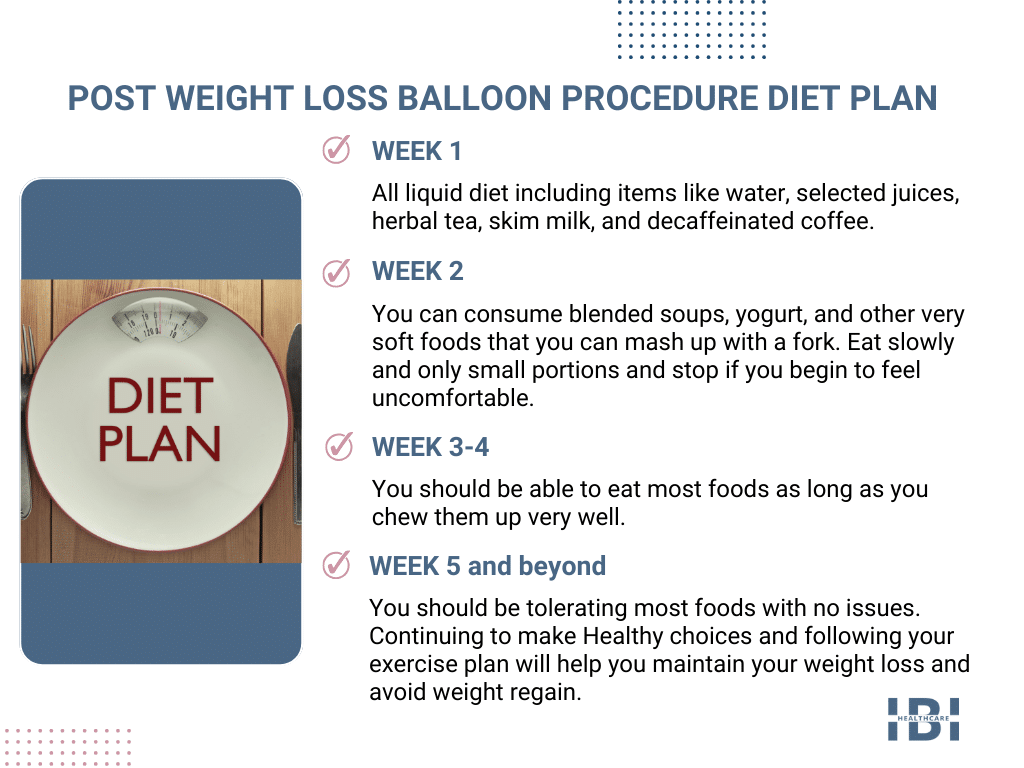1. What is a Weight Loss Balloon?
A weight loss balloon, or gastric balloon as people often call it, helps a patient lose weight by placing a non-surgical, temporary device in the stomach.
2. What is the Difference Between a Weight Loss Balloon and Bariatric Surgery?
A gastric balloon is a non-surgical weight loss procedure that requires no incisions or sutures and does not cause scarring. The doctors permanently alter a patient’s digestive system through bariatric surgery, while they only place a stomach balloon temporarily for six months to help facilitate weight loss.
The balloon is inserted into the stomach under light sedation. However, bariatric surgery mandates general anesthesia. Recovery time for the balloon insertion is typically 2-3 days, whereas surgical weight loss procedures demand a minimum of six weeks for recuperation.
3. Why Would Someone Consider a Gastric Balloon?
For patients who do not wish to undergo a permanent surgical procedure but need some help with weight loss, a gastric balloon would be an excellent but temporary choice. Also, more patients qualify for the procedure because the BMI level requirements (30-40) are not as high as they are for weight loss surgery (35+).
4. How Does Losing Weight with a Gastric Balloon Work?
Once you insert the weight loss balloon, fill it with saline to expand it to a grapefruit-sized diameter of 4-6 inches. By doing so, it forms a physical barrier in the stomach, limiting the intake of food during meals. Consequently, patients experience a feeling of fullness, eliminating constant hunger pangs.
The ultimate goal when using the Orbera balloon procedure for weight loss is for the patients to lose weight, and more importantly to learn portion control and develop new lifestyle habits that will keep the weight off.
5. Will a Weight Loss Balloon Work Alone to Help Me Lose Weight?
The balloon works hand in hand with lifestyle choices to help patients lose weight and keep it off. Patients work closely with their bariatric clinic’s dietician and other clinic professionals to create and implement a diet and exercise plan.
The balloon in the stomach is only a tool that is most effective when used in conjunction with a healthy diet and daily exercise. Weight loss balloons require a 12-month commitment to working closely with the specialists from the bariatric clinic. One of the best parts of choosing an endoscopic balloon for weight loss is the ongoing support the patient receives.
The balloon remains in the stomach for 6 months but patient treatment does not end until a full year has passed. Patients are typically required to meet with the specialists once a month although many do offer telehealth.
6. What Size is a Gastric Balloon in the Stomach?
The typical size of a weight loss balloon is anywhere from 4-6 inches or about the size of a grapefruit.
7. How Much Weight Can I Lose with a Gastric Balloon?
Patient compliance with the diet and exercise part of the plan largely determines the amount of weight that can be lost with the help of a weight loss balloon. Patients who commit to making the necessary lifestyle changes long-term will benefit the most.
The typical weight loss result is approximately 20-50 pounds depending on the patient’s starting weight. With the help of the weight loss balloon, patients can lose 3 times the amount of weight vs. diet and exercise alone.
Patient testimonials report varying degrees of weight loss but one patient’s experience was a loss of 38 pounds in the first month after the balloon was placed.
8. Who Is a Good Candidate?
Adults with a body mass index (BMI) of between 30-40 who have never undergone prior bariatric surgery, hernia repair, or other stomach surgery, are not pregnant or breastfeeding may be a candidate for a gastric balloon.
Patients also must be willing to participate in the “supervised” portion of the program that requires a 12-month commitment.
9. How Long Does It Take to Insert Or Remove a Gastric Balloon?
Each procedure requires only about 20 minutes to complete.
10. What Does a Weight Loss Balloon Feel Like in Your Body?
Most patients say having a balloon in their stomach at first made them feel like they had just eaten a big meal and they feel very full. This feeling goes away after a few weeks as their body gets accustomed to the balloon. The good news is that the balloon is not noticeable from the outside.
11. Will I Regain Weight after It Is Removed?
Long-term weight loss maintenance is dependent upon the patient’s dedication to following the prescribed diet and exercise program. If the patient adopts permanent lifestyle changes in these areas, they will be successful in maintaining their results and fending off weight regain.
12. What Can I Eat After Getting a Weight Loss Balloon?
After placing the weight loss balloon in your stomach, the doctor will advise you to give your stomach a little break as it will feel aggravated from being invaded by a foreign object.
Starting with a liquid diet and working back up to solid foods will help the stomach adjust. Patients opting for a gastric balloon for weight loss have more food choices compared to those undergoing bariatric surgery.

Helpful Eating Tips after Getting a Stomach Balloon
- Eat protein first to ensure you get an adequate amount to avoid nutritional deficiencies.
- Doctors recommend that patients avoid carbonated beverages, caffeine, and alcohol while the balloon is present.
- Some foods tend to stick to weight loss balloons so about 30 minutes after you finish eating, you can drink water which will help rinse it off.
13. What are the Side Effects of Gastric Balloons? Are they Safe?
Gastric balloons, which have evolved in shape, design, and size over the past 20 years, remain safe and effective. When compared to bariatric surgery, balloon procedures carry a lower risk profile.
Many patients report symptoms of nausea and vomiting the first few days after the insertion of the balloon. However, the doctor can prescribe medication to alleviate this discomfort.
Serious side effects are rare (1/10,000) but can include balloon deflation, stomach ulceration, bowel obstruction, intestinal perforation, and death.
14. What are the Symptoms Associated with Gastric Balloon Failure?
Although rare, a deflated gastric balloon poses a serious health risk, necessitating immediate medical attention. Left untreated it could create life-threatening complications. Prolonged nausea, vomiting, or pain are signs that indicate something has gone awry with your stomach balloon. A quick x-ray can determine if there is a problem with the weight loss balloon.
To explore gastric balloon-assisted weight loss further, reach out to IBI Healthcare Institute today for a consultation. Our team can assess your candidacy and assist in devising a personalized plan to meet your weight loss objectives.











